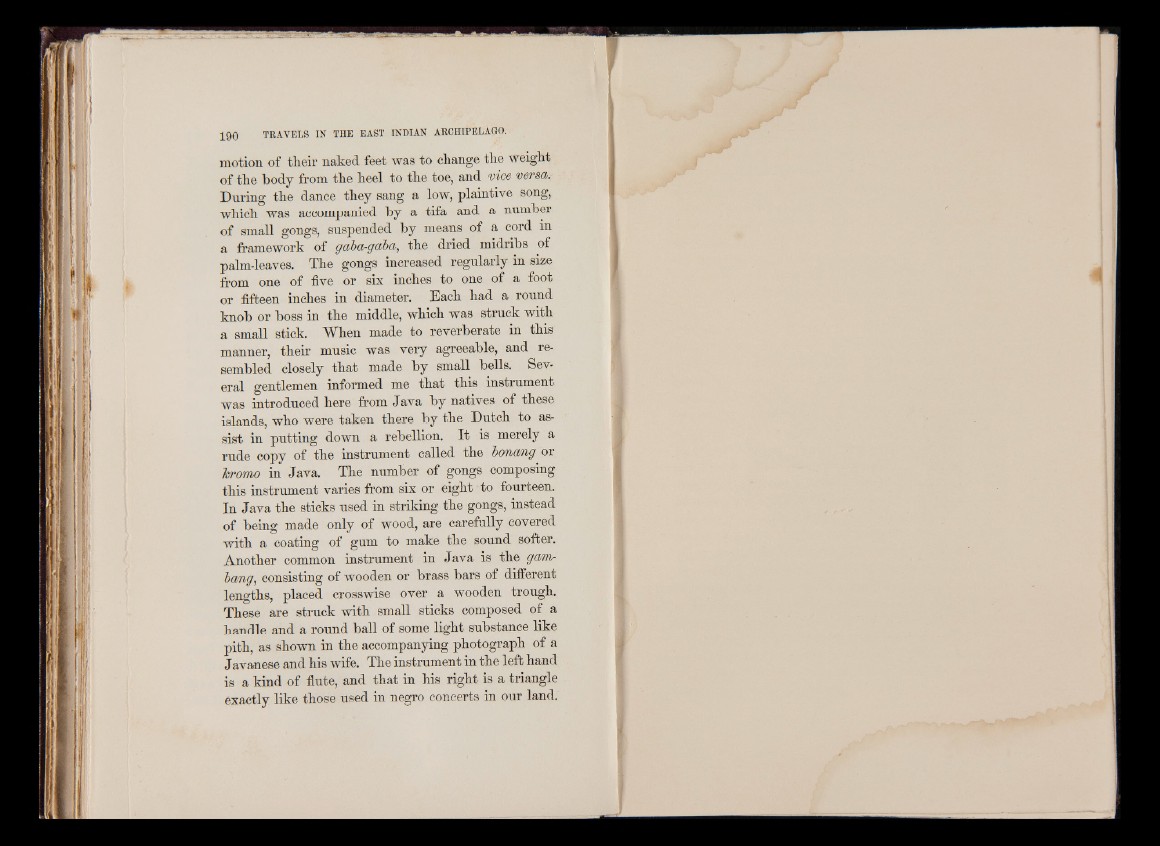
motion of their naked feet was to change the weight
of the body from the heel to the toe, and vice versa.
During the dance they sang a low, plaintive song,
which was accompanied by a tifa and a number
of small gongs, suspended by means of a cord m
a framework of gaba-gaba, the dried midribs of
palmdeaves. The gongs increased regularly in size
from one of five or six inches to one of a foot
or fifteen inches in diameter. Each had a round
knob or boss in the middle, which was struck with
a small stick. When made to reverberate in this
manner, their music was very agreeable, and resembled
closely that made by small bells. Several
gentlemen informed me that this instrument
was introduced here from Java by natives of these
islands, who were taken there by the Dutch to assist
in putting down a rebellion. It is merely a
rude copy of the instrument called the bonang or
hromo in Java. The number of gongs composing
this instrument varies from six or eight to fourteen.
In Java the sticks used in striking the gongs, instead
of being made only of wood, are carefully covered
with a coating of gum to make the sound softer.
Another common instrument in Java is the gam-
bang, consisting of wooden or brass bars of different
lengths, placed crosswise over a wooden trough.
These are struck with small sticks composed of a
handle and a round ball of some light substance like
pith, as shown in the accompanying photograph of a
Javanese and his wife. The instrument in the left hand
is a kind of flute, and that in his right is a triangle
exactly like those used in negro concerts in our land.